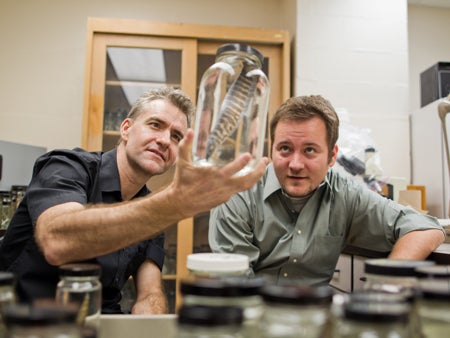This theory may challenge the conventional wisdom that rapid changes in animal species are spurred primarily by adaption to new ecological opportunities — a theme central to Darwin’s theory of evolution.
University of Central Florida Biology professor William Crampton worked with lead author Matthew E. Arnegard of the University of British Columbia and a team of scientists to examine the fish in the Ivindo river basin of Gabon in the rainforests of West Africa. Their findings are reported in September’s issue of The American Naturalist.
Crampton’s research focuses on electric fish as a model for exploring why there are so many species in the tropics and how that diversity originated and is maintained. He hopes that a better understanding of tropical diversity will lead to more effective conservation strategies for threatened habitats and species.
Crampton and UCF mathematics Ph.D. candidate Justin Davis used digital signal processing tools called “wavelet analysis” to develop a new way of deciphering the electric signals of 21 species found in the African study. The mathematical technique they developed is similar to the way computers recognize voices when a caller responds to prompts on an automated phone line.
What the scientists found was surprising.
The electric signals the fish used to select mates were diversified far more than expected. The changes in signals greatly exceeded evolutionary changes in the fish’s physical attributes and diet. The team suggests that because no other fish were using electric signals to communicate in the basin, the Paramormyrops was able to fill the frequencies quickly while mating, triggering the rapid diversification of their kind into more than 21 distinct species.
The hypothesis caught the attention of the prestigious Nature journal, which highlighted the team’s research in a News & Views article in the Sept. 9 edition.
It said the team’s work is intriguing and that advances in technology will probably help scientists explore evolution in other animals that use unusual communication systems. These include frogs with ultrasonic calls and butterflies that can see polarized light.
